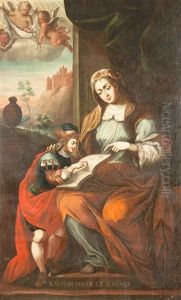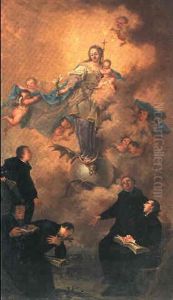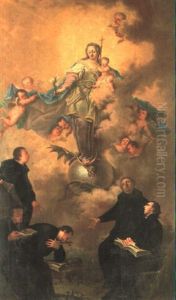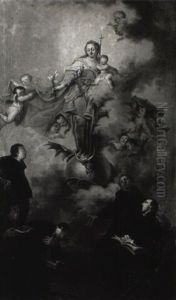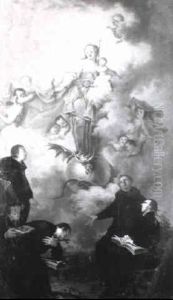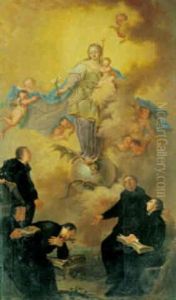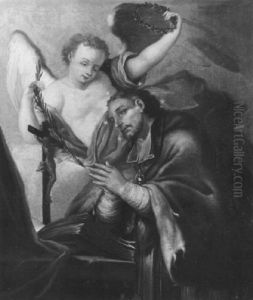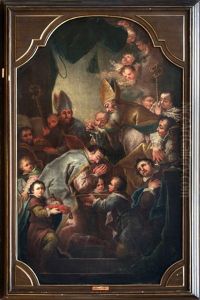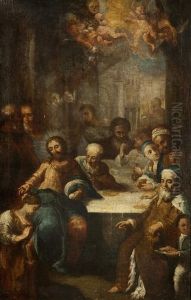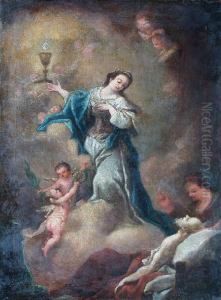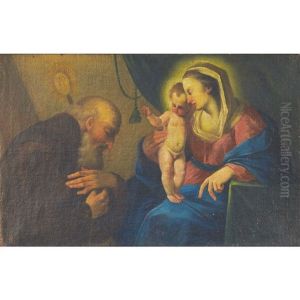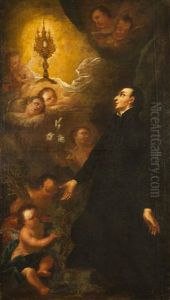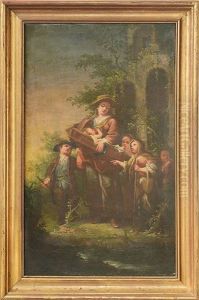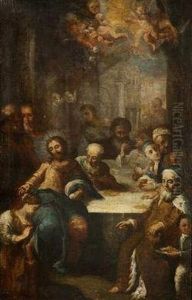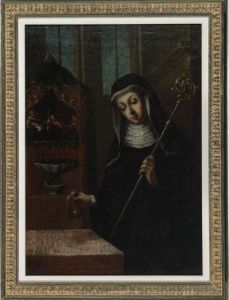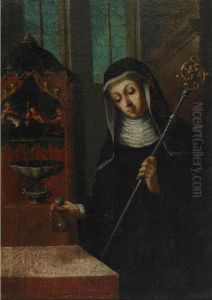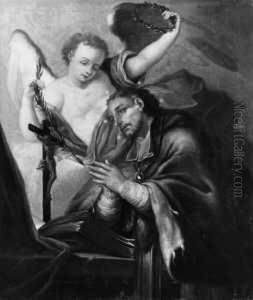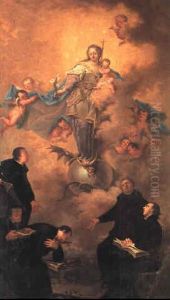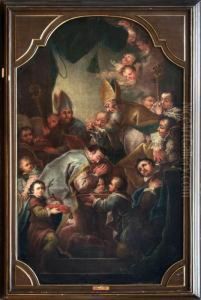Ignaz Joseph Raab Paintings
Ignaz Joseph Raab was a prominent Czech painter of the 18th century, known for his significant contributions to Baroque and Rococo art. Born in 1715 in Bohemia, then part of the Habsburg Monarchy and now in the Czech Republic, Raab's early life was steeped in the cultural and artistic traditions of Central Europe, which would heavily influence his later work. His precise birthplace within Bohemia is not well-documented, reflecting the often sparse records of artists from this period. However, what is known is that Raab's artistic talent became apparent at a young age, leading him to pursue formal training in painting.
Raab's education and early career are characterized by his travels across Europe, a common practice among artists of his time seeking to broaden their skills and perspectives. He likely studied under leading painters of the Baroque period and was influenced by the dramatic use of light and shadow, as well as the emotional intensity typical of the style. Over time, Raab developed a distinctive approach that also incorporated elements of the emerging Rococo style, known for its lighter themes, playful subjects, and ornate details.
Throughout his career, Raab was known for his religious compositions, portraits, and frescoes. His work was marked by a mastery of color and a delicate handling of light, creating vivid, dynamic scenes that engaged viewers. Raab's religious paintings, in particular, were celebrated for their spiritual depth and the ability to convey the divine through the human form. He worked on numerous commissions for churches and monasteries across Bohemia and beyond, contributing to the rich tapestry of 18th-century Central European art.
Ignaz Joseph Raab's contributions to the art world were not limited to his paintings; he was also involved in the artistic communities of his time, influencing and being influenced by his contemporaries. Despite the acclaim he received during his lifetime, Raab's work was somewhat overshadowed in the centuries following his death in 1787, as art historical narratives shifted focus. However, recent scholarship has begun to reevaluate Raab's impact, placing him back into the context of the European art scene of the 18th century.
Raab's legacy is seen not only in his surviving works but also in his influence on the development of Baroque and Rococo art in the Czech lands and Central Europe. His ability to blend the grandeur of the Baroque with the elegance and whimsy of the Rococo makes his work a valuable study in the evolution of European art. Today, Ignaz Joseph Raab is recognized as an important figure in the history of Czech art, with his paintings held in both national museums and private collections, a testament to his enduring appeal and significance.
